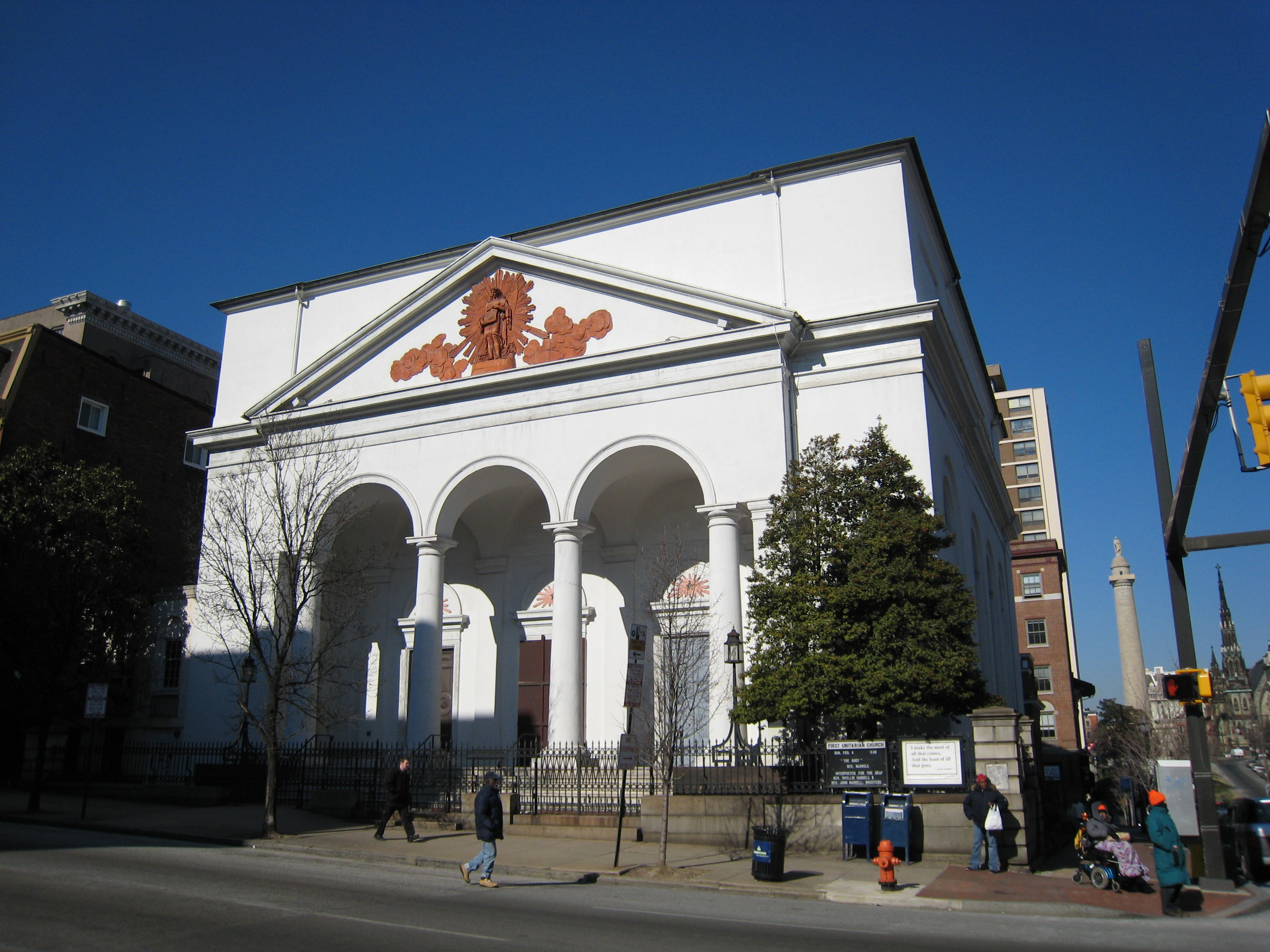Returning to religious architecture, this week’s entry in the Baltimore Building of the Week series is the First Unitarian Church of Baltimore, the very first building erected for Unitarians in the United States, at the northwest corner of Franklin and Charles Streets. Continue to the end for the answer to the question posed in last week’s post on Baltimore’s Columnar Monuments.

If the Basilica is Baltimore’s neoclassical Hagia Sophia, its neoclassical Roman Pantheon stands only a block away. Completed in 1819 to the designs of the French architect Maximilian Godefroy, the First Unitarian Church is a simple cube topped with a hemispherical dome. An arched Roman Doric portico and pediment mark the entrance on Franklin Street (the new prayer garden commemorating Pope John Paul II has opened up the view). Despite its classic simplicity, the dome had notoriously bad acoustics. Eventually a lower plaster vault was constructed beneath it. Baltimore’s other Pantheon is Davidge Hall, the original building of the University of Maryland, at Greene and Lombard Streets.
Finally, Dr. John Breihan provides an answer to last week’s question on the Washington Monument,
On the Washington Monument, George Washington is depicted surrendering his commission as general of the Continental Army. He did this in Annapolis on December 23, 1783. Like the virtuous ancient Roman general Cincinnatus, Washington gave up supreme military power to return to his farm at Mount Vernon.

The terra-cotta sculpture within the pediment represents the “angel of truth” and was done by Antonio Capellano who also was the sculptor for the Battle Monument and was responsible for the two relief sculptures on the facade of Old St. Paul’s Episcopal Church.
By 1950s the “angel of truth” had deteriorated and was in poor condition. In 1954, it was replaced by a replica done by Baltimore sculptor Henry Berge.